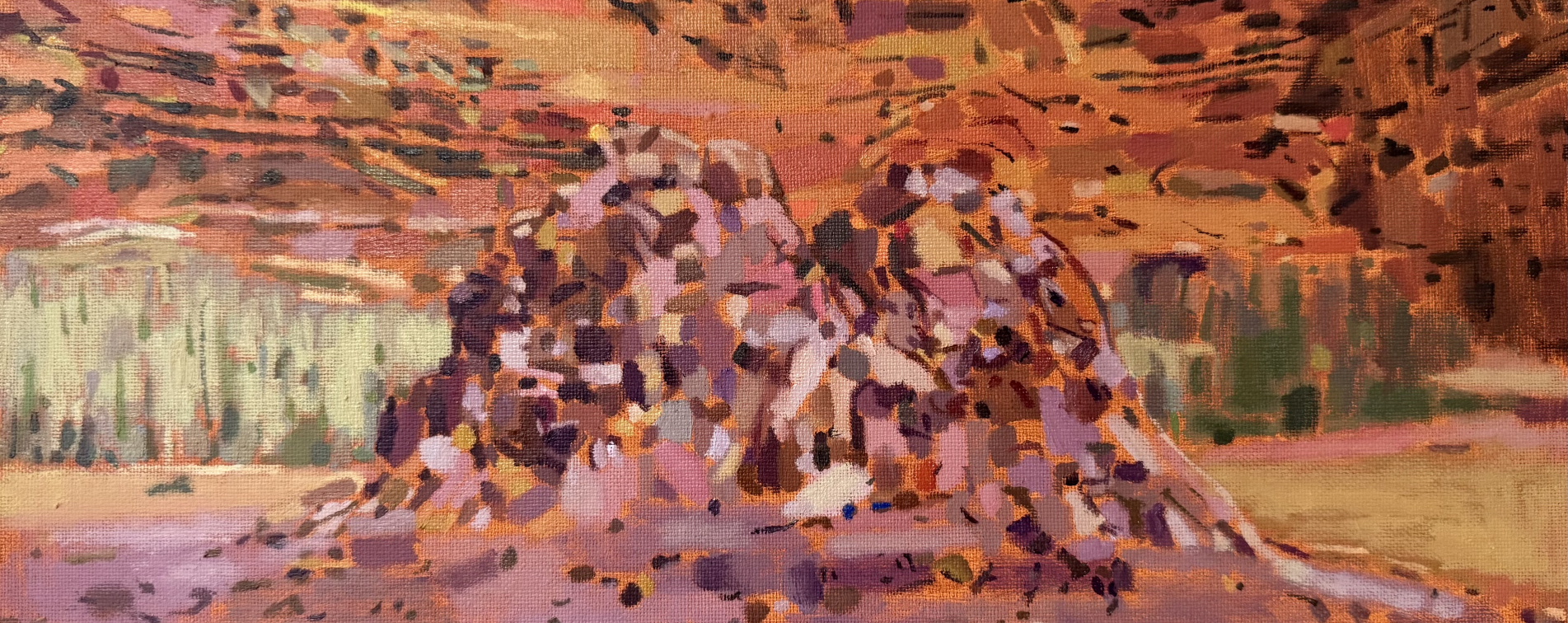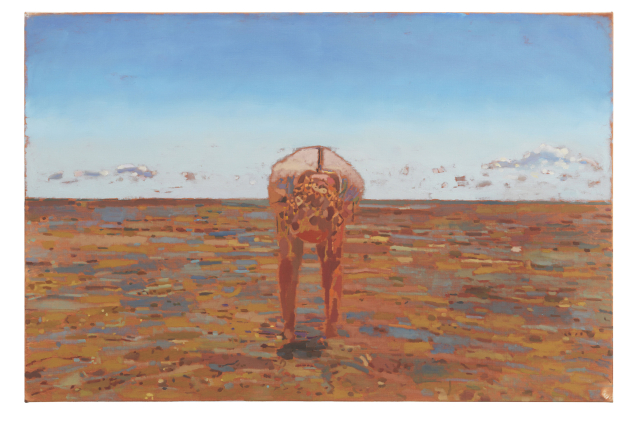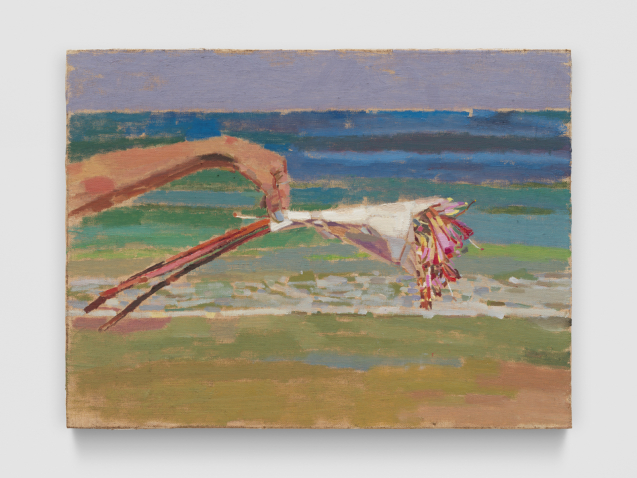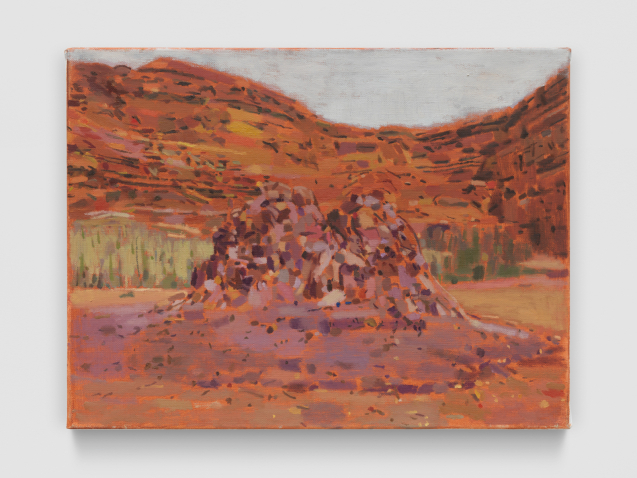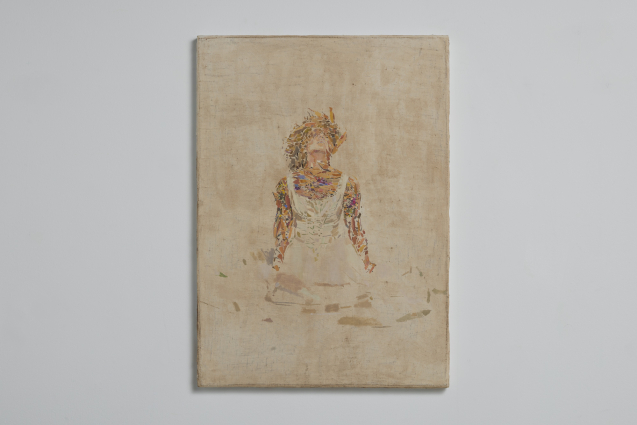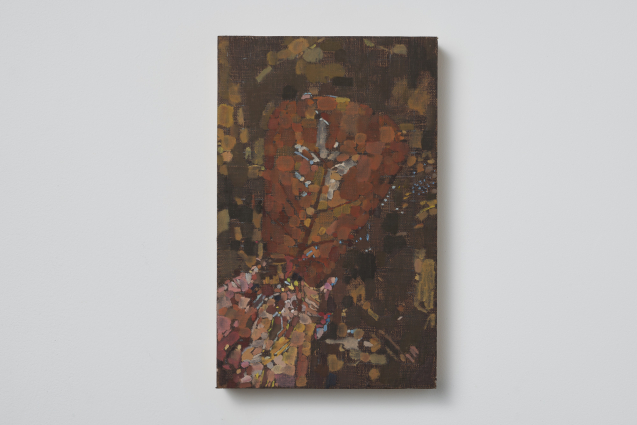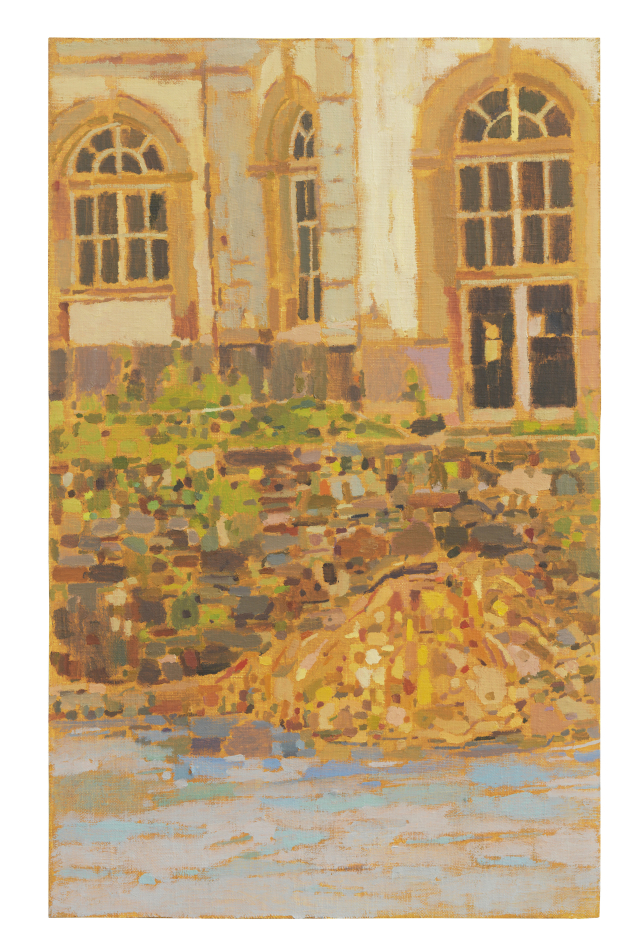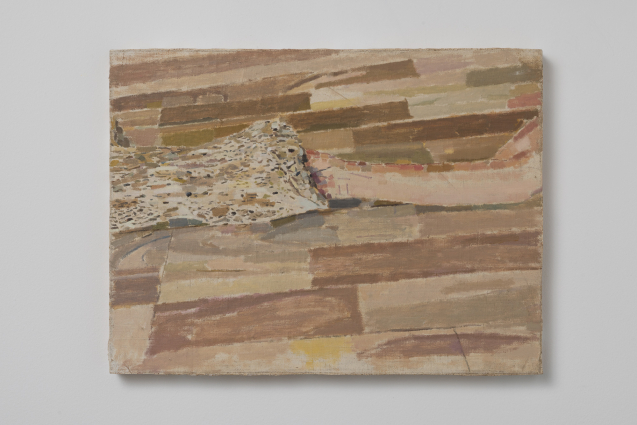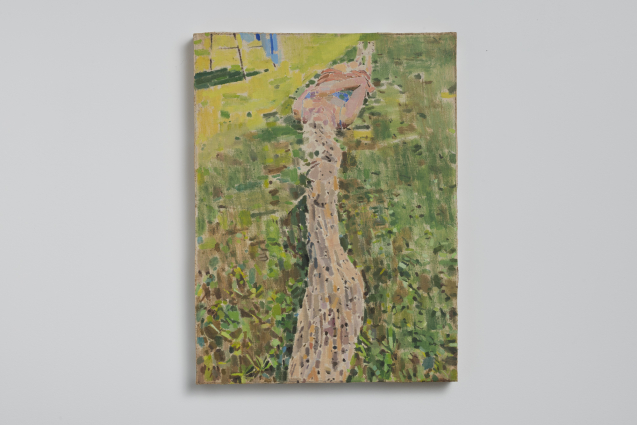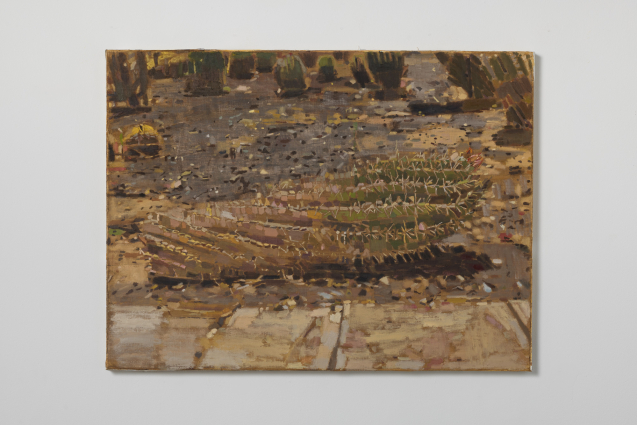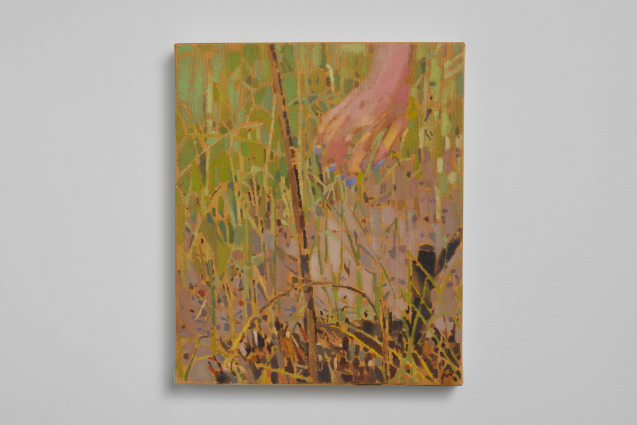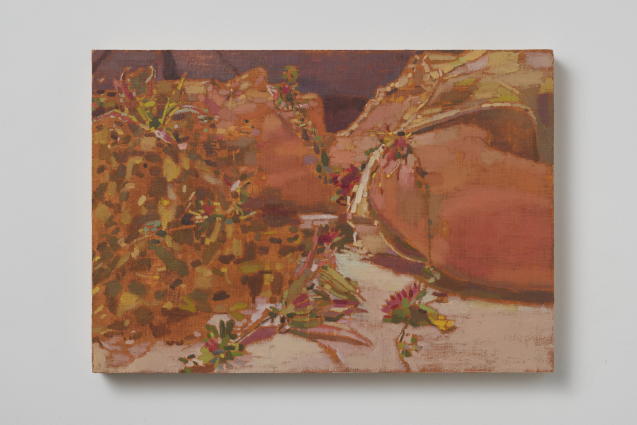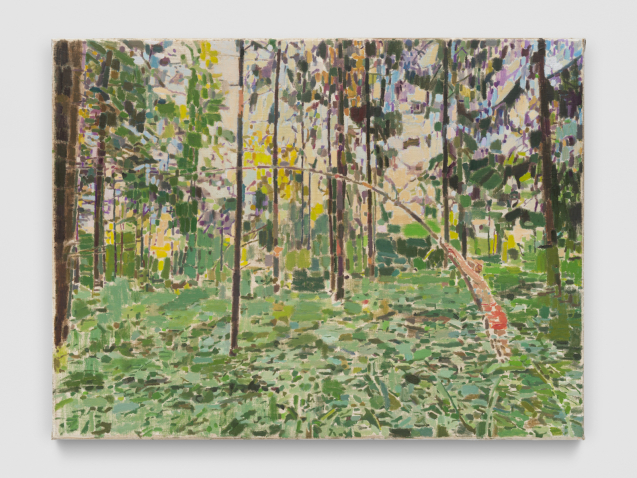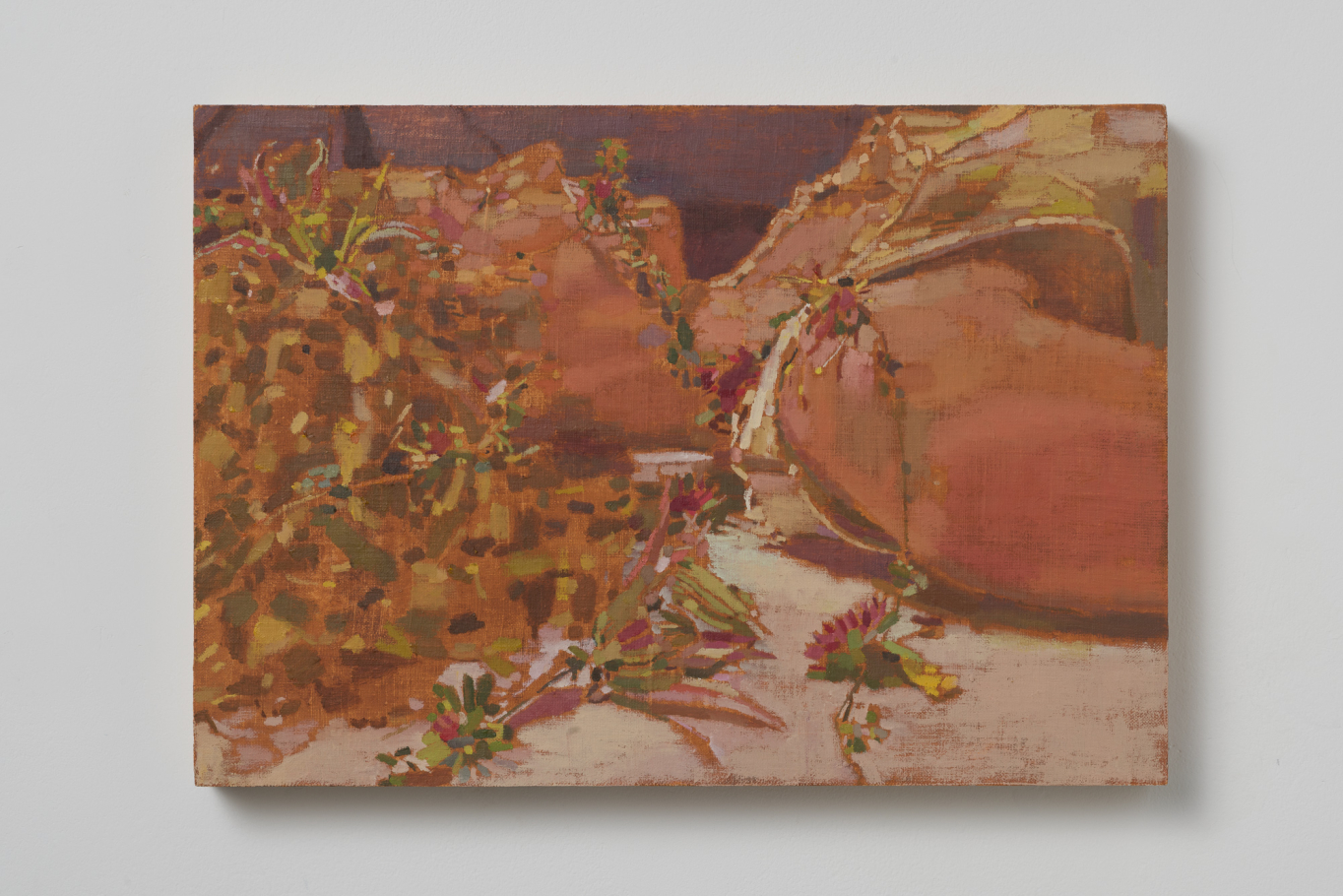Fatma Shanan continues her quest for inner and outer forms of nature, whether in her transitions between video and painting or between the Ramon Crater’s layers of rock and the Dead Sea. In her exploration of geographical and intrinsic territories, Shanan traverses countries and continents, gradually shedding layers as she moves toward unity with everything around her. In her most recent series, at the heart of “Still in Motion,” her body merges with the earth, becomes one with trees, floats upon water, and transforms into fertile ground for sprouting a new narrative.
Inspired by Walt Whitman’s Leaves of Grass, Shanan has, in recent years, reexamined her relationship with her surroundings. Whitman’s exploration of the unmediated bond between man and the world celebrates one’s direct connection with nature, depicting grass as a harbinger of eternal, cyclical renewal.
In a series of intense performative acts, Shanan examines the moments when the boundaries between her body and her immediate environment dissolve. As she spends hours in the thick waters of the Dead Sea, her body shifts between solid and liquid, between sinking and floating, becoming a drifting, blooming island; flowers erupt from her flesh as she focuses on inhaling and exhaling. In the ocean of Miami, Shanan lingers in an intermediate state—neither fully awake nor asleep, neither drowning nor floating. Upon the rocks of the crater in Mitzpe Ramon, Shanan’s body grapples with the unexpected crumbling of the soft rock. The crater, itself shaped by the movement of water—from the Tethys Sea, which once flooded it, through the formation of marine sedimentary rocks, to the receding of the sea and the rivers that swept away the soft stones—continues to transform, sculpted by both the forces of nature and the artist’s body. Shanan does not strive to conquer the mountain or force the rocks to the peak. Unlike Sisyphus, who endlessly pushes the rock uphill only to watch it roll back down, she seeks to encounter the rock through her hands, to fathom it, to explore the possibility of the rock rolling downward not merely as a punishment imposed by the gods, but out of its own profound yearning to return to the earth on which it once stood. It is not only Sisyphus pushing the rock, nor Shanan seeking access to it; not only Shanan trying to float on water, but also the sea choosing to carry her. It is a mutual relationship, where both parties, while possessing their own roles and power, strive to redeem beauty in a concerted effort.
The landscape with which Shanan interacts is often delicate, fragile and requires attention, demanding all of her senses. It sometimes bears the imprint of human influence—the disintegration of beauty reflected in the shrinking Dead Sea, in the crater exposed to accelerated weathering, an illusion of power that struggles to recognize its innate potential for disappearance and extinction. Dried cactus fronds, from which Shanan creates extensions for various limbs, line the roadsides and forests, resembling the dried remains of a snake, shed and replaced only to give way to a new cycle. The cactus acts almost as a second skin, a porous, exterior layer linked to a hybrid body.
Shanan’s performative acts lay the foundation for her video works and paintings. While the camera captures and defines the entire frame, the hand-held brush deconstructs it into its basic components: small, precise strokes form tiny lines that gradually build the entire painting. While painting, Shanan seeks to uncover the inner essence of things, the place where green splinters into countless shades, where a leaf is composed of capillaries. Painted nature is, in effect, constructed from nature itself—mineral and vegetal pigments applied to a surface of linen fibers. Each painting takes months to complete, built up gradually through pausing and resuming, an accumulation of strokes placed side by side on the canvas, past time alongside present time. The landscape that ultimately takes shape is both familiar and unfamiliar, similar yet diverging from the original. It is a painting that traces reality without masquerading as reality, representing the world as seen through the eyes of one who seeks not merely to observe, but to actively engage with it.
The exhibition was supported by Mifal HaPais and Asylum Arts.

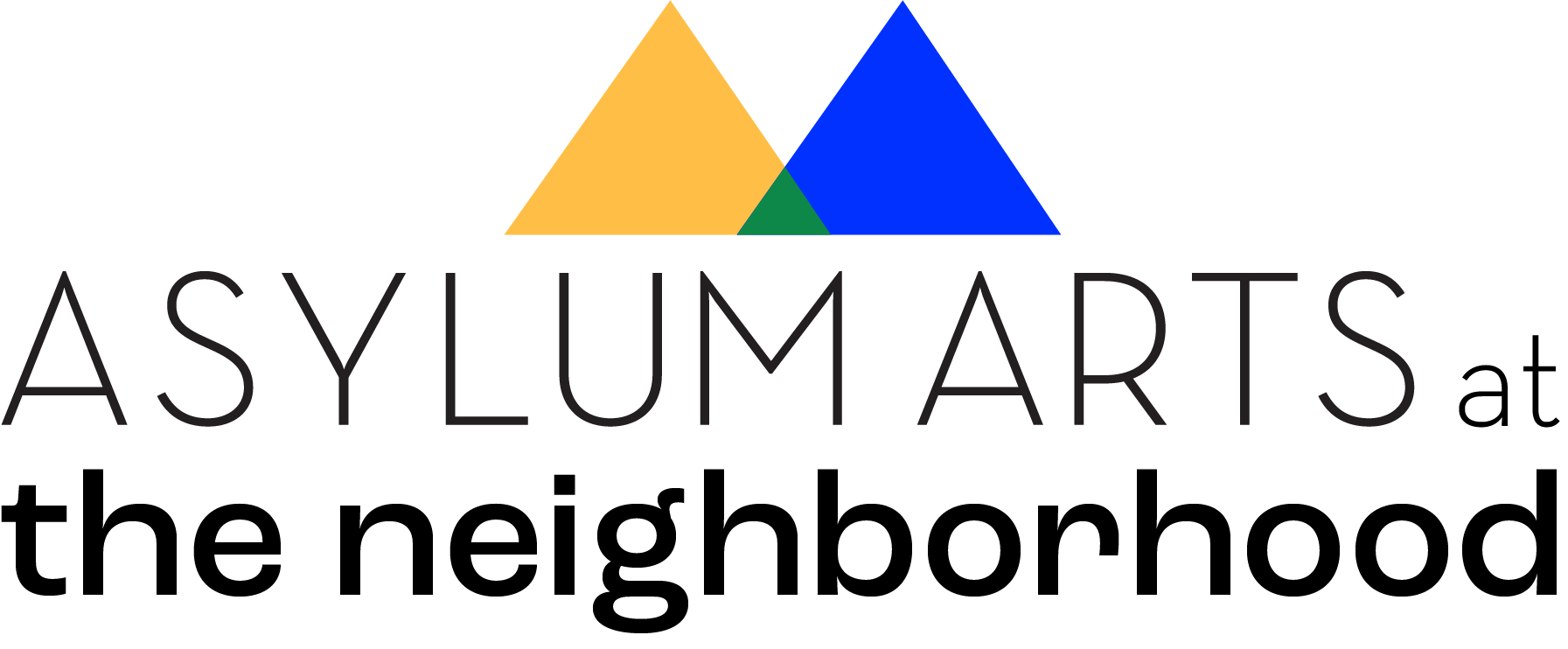
Read more
